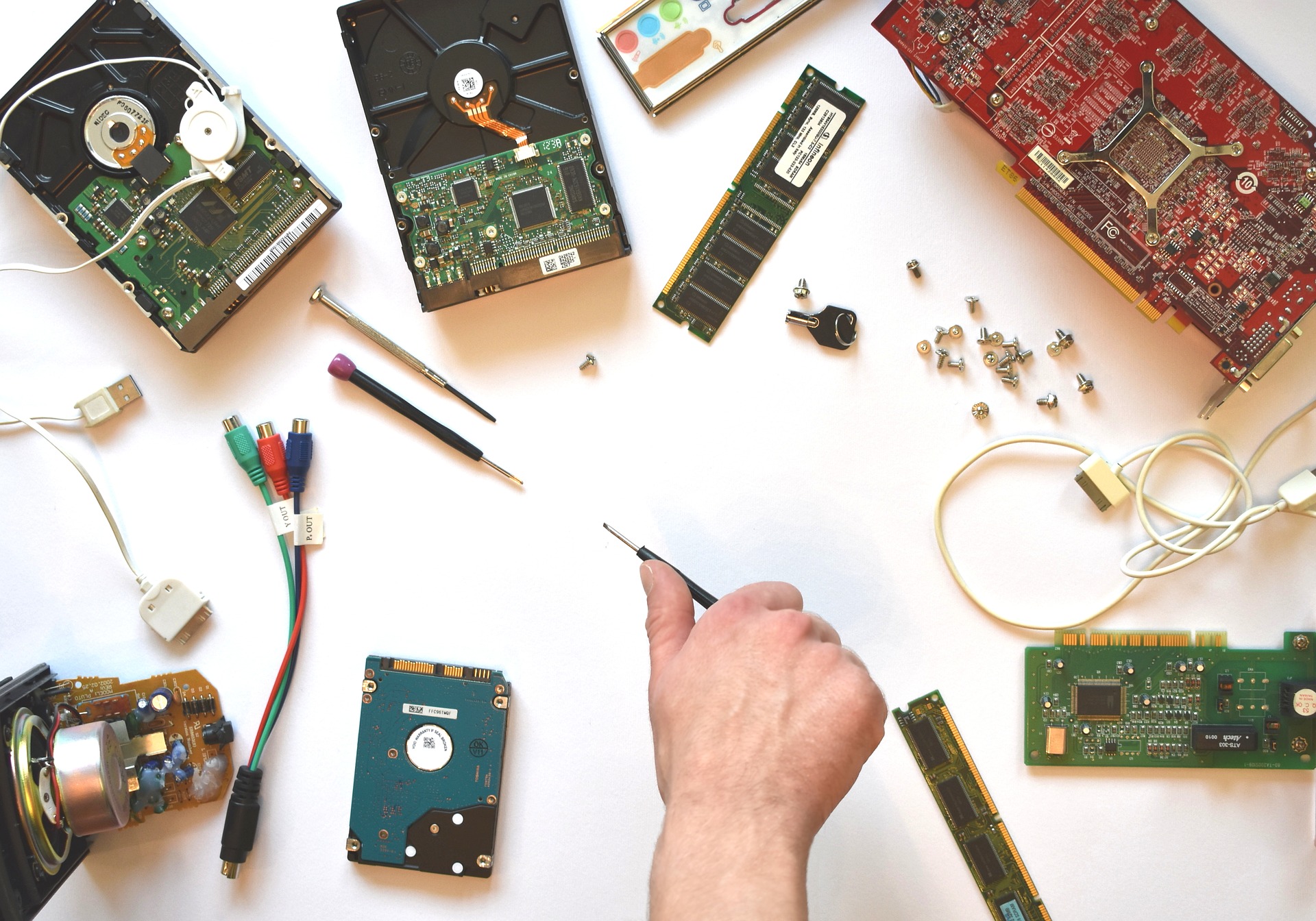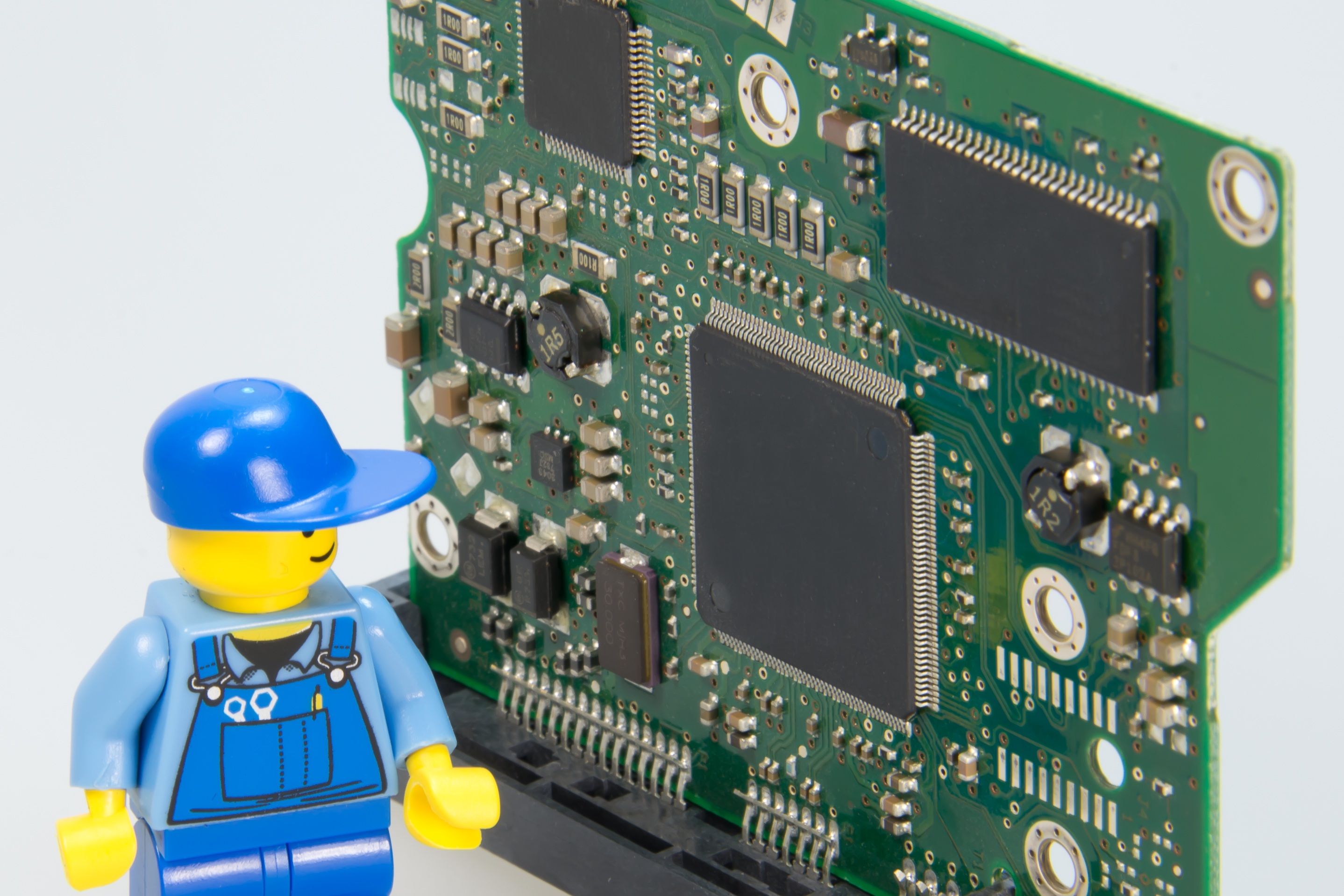Our forum member and senior moderator helpstar recently created an interesting tutorial in the forum, which (especially for newcomers and laymen) sees itself as a kind of easy-to-work checklist for emergencies. However, since the length of the entries in the forum is limited, I have brought the good piece to the front page and added some of my own contributions, which we have already had online for a long time.
Normally this is also in all manuals of the hardware, which can be found on the corresponding manufacturer pages in PDF format, but firstly it usually reads none and secondly, nothing is complete. And now I leave helpstar the word:
Before you start testing and possibly Repair does: if still possible, please do backups via cloud services or external hard drives. These help enormously, especially with wedding or holiday photos, which can otherwise be irretrievably gone.
Checklist for new PCs and for modified or added components
- Is the processor compatible with the motherboard (manufacturer side of the motherboard: CPU compatibilty list)?
- Does the BIOS need to have a specific version to support the installed processor or even memory? Graphics cards can also run more stable with the motherboard's more up-to-date BIOS or be brought to life.
- If the memory is compatible with the motherboard (QVL list on the manufacturer's side of the motherboard, possibly List on the manufacturer's side of the RAM)
- Does the CPU sit correctly in the motherboard socket? CPU socket pins of the motherboard may bend during installation
- Is the heat sink flat on the CPU and is also thermal paste in between?
- Are all fans, especially the CPU fan, plugged into the correct connection of the motherboard?
- Is the video card connected correctly? Graphics cards may require 6-pin, 8-pole, 6-pole + 8-pole or 8-pole + 8-pin power plugs. It is usually marked with PCIE on the PC's power supply plug. Without additional power supply, the system usually does not boot at all. In addition to the graphics card, a lamp can light up, which signals an undersupply.
- Is the card also in the right slot and is locked in? To do this, please consult the manual of the motherboard and the graphics card.
- Is the 24-pin power connector correctly connected to the motherboard? Today's motherboards are powered by the 24-pin (also 20+4) ATX main plug and additionally with an ATX12V (4-pole or 4+4/8-pole) plug, 8-pin also called EPS plug. Nothing works without the 4-pin ATX12V. If the motherboard has an 8-pin plug-in option, it should also be supplied with the corresponding plug of the power supply. It can go with 4 poles, but can lead to crashes or undersupply. Some motherboards have a cover on the second 4 poles, simply remove them and supply them with 8 poles. For this purpose, please consult the mainboard manual.
- Was the motherboard screwed correctly? Before the first start, make sure that the motherboard is screwed to the housing with spacers and is not directly connected to all connections on bare metal. In addition, no ESD film/packaging film of the motherboard is suitable for testing outside the housing, as it also conducts wood.
- Is the front panel properly wired according to the manual? (PowerLED, HDD LED, Speaker,…), as well as additional USB ports also connected in the USB ports and not in the front audio ports?
- Are the data reprimands connected correctly? SATA hard drives and SSDs require a power supply in addition to the data cable to the motherboard.
- Is the plug plug in the socket and is the natz part switched on? (Off switch on the back)
- Is the monitor connected correctly? If an extra graphics card has been installed, connect the display port, HDMI, DVI or, if not otherwise possible, VGA. There is now quite good processor graphics, which does not require any additional graphics card. To do this, the motherboard must have the connectors like a graphics card and a processor with a graphics core. Since the connectors alone are not sufficient for output on the screen. If both requirements are met, the monitor can also be connected to the motherboard.
- Problems with USB devices? Primarily the chipset driver of the motherboard and if an extra USB chip is soldered, install the appropriate driver from the support page of the motherboard. Some USB devices, such as the mouse and keyboard, do not work correctly or not at all on various USB ports. Here can also help to try all connections one after the other. The first step should be to start with the USB2.0 (black). In between, restart Windows.
The PC is not booting?
- The motherboard is flashed with a BIOS/UEFI that is too old and the CPU is not yet supported. Therefore, check for the BIOS version before performing a CPU upgrade/replacement. can be read in the BIOS/UEFI itself. Then flash to the latest version if necessary. Please never leave Windows here. A FLASH tool is usually integrated in the BIOS/UEFI, see the motherboard manual. E.g. Q-Flash (gigabyte), EZ-FLASH (ASUS), M-FLASH (MSI), instantFlash (ASRock)
- With a newer graphics card, it may be necessary to update the BIOS beforehand, similar to the CPU. Also help to reset the BIOS, here please perform a CMOS reset (clrCMOS or JBAT or similar) by jumper (short-circuit bridge). If there are only two bare pins on the motherboard, plug the plug out of the socket and use a screwdriver to bridge the two pins for a few seconds.
- The power supply is defective, too weak or a so-called "Chinaböller", which is said to be 500Watts e.g. actually only 250W or so and no protection mechanisms etc. has in it. Please do not save at the wrong end here.
- Usually the fans turn briefly or nothing happens at all or it works after the umpteenth attempt to start the PC.
- The BIOS/UEFI loads with incorrect parameters. A CMOS/BIOS reset may be required here. Usually a so-called jumper, here before plugging the PC out of the socket and doing the reset according to the manual. After that, it may be. the order of the drives in the BIOS (boot priority).
- No operating system has yet been installed on the hard drive, e.g. install an installation DVD.
- Many errors are heard by Beep Codes, sounds similar to MorseCode, beeping short or long and thus indicating a problem. For example, incorrectly plugged RAM, graphics card,…
- If everything has nailed before, connect only the most necessary parts (minimum configuration): motherboard + power supply (ATX main plug + 4/8-pin EPS/ATX12V plug), CPU with cooler and fan, 1x memory (only one latch, put it in the recommended DIMM slot according to the motherboard's manual), graphics card with power supply if the processor or motherboard does not have a graphics unit. The motherboard can still have graphics connectors, but they will not work.
- Everything else like hard drives (also M.2), other plug-in cards, USB devices (also mouse and keyboard), case fans, network cables, etc. unplug for testing.
More tips and advice
- In principle, it is appropriate to reinstall the operating system when replacing the motherboard and/or CPU. For graphics cards, uninstall at least the driver of the previous one beforehand. The normal uninstallation via Windows can work, usually with the tool DDU Uninstaller.
- Drivers should currently be downloaded and installed from the appropriate manufacturer's sites, enclosed CDs are usually outdated.
- Free helper and diagnostics programs are quite helpful to detect problems during operation, such as bluescreens, freezes, crashes, restarts for no apparent reason
- With AS SSD, the speed of SSDs can be measured and also indicates whether the SSD has been configured correctly. Green is good, red is bad.
- Hard drives should generally be checked for errors using the manufacturer's own diagnostic tool and, if available, the firmware should be updated. But only with a semi-stable system.
- Memtest86+ is a program for checking memory and can be installed directly on a USB stick, which then becomes bootable. (format with FAT16 or FAT32).
- You can check whether the PC was installed correctly in the Windows Device Manager. There should be no question or exclamation marks. Errors can be found in the Event Manager of Windows.
- With Bluescreenviewer you can find out the exact wording of the bluescreen
- In Windows 10, software problems can be eliminated quite quickly by the integrated reset of the operating system. Beforehand, please never forget to make a backup copy of all important data on an off-system data carrier!
Important tutorials and tips from Tom's Hardware Germany
- Stress tests in detail: Testing graphics cards correctly (Tutorial – Part 1)
- Stress tests in detail: Test the CPU and the entire system correctly (Tutorial – Part2)
Links to other download/product pages:
- Analysis and diagnosis
- AIDA64
AIDA64 is a system, diagnostics and benchmarking program for hardware analysis, monitoring and benchmarking. - Hwinfo
HWiNFO is a system and diagnostic program for hardware analysis and monitoring. - Speccy
Speccy is a system and diagnostic program for hardware analysis and monitoring – limited. However, unlike AIDA64 or HWiNFO, it is simple and therefore suitable for beginners/beginners - Crystaldiskinfo
CrystalDiskInfo is a self-monitoring, analysis, and reporting technology (S.M.A.R.T.) Analysis program. - MSI Afterburner
MSI Afterburner is the overclocking program for graphics cards. There is a detailed overview of the hardware and other features, such as adjusting fan settings, benchmarking and video recording.MSI Afterburner, along with HWiNFO, is very well suited to performance issues (jerking, FPS intrusion, frame drops, lags) – On-screen display (OSD). - USB Device Tree Viewer
In addition to USB information, USB Device Tree Viewer also collects data from Windows device management and merges the two – so it can also display drive letters and COM ports from USB devices.
- AIDA64
- Benchmarks and testing
- AS SSD Benchmark
- CrystalDiskMark is a solid-state drive (SSD) benchmark program.
- Crystaldiskmark
CrystalDiskMark is a disk benchmark program. - 3dmark
3DMark is a graphics card/GPU stress test and benchmark program. - Furmark
FurMark is a lightweight but very intense graphics card/GPU stress test and benchmark program. - Prime95
Prime95 is an intense processor/CPU stress test. Prime95 can also be used as a system benchmark.
- More
- Settings and Troubleshooting Tool for Windows 10 – Find
Note:
Analysis and diagnostic programs must be run with administrative rights – administrator – in order to be able to read all data. A short memory diagnostic test is built into Windows 10: mdsched.exe (microsoft.com (en): Check MEMORY (RAM) with the memory diagnostic tool)


































Kommentieren